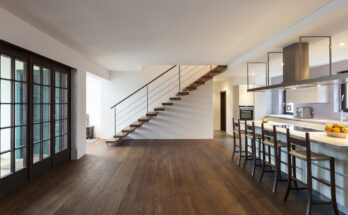The Riba House Of the Year award is the only time of the year that you can admire your neighbor’s house without being judged. London is the most important city in this year’s competition. Since 2015, the Manser Medal awards, which were formerly known as London’s Manser Medal, have been renamed. No project from the capital has won the title. Four projects have made it to the longlist of 20 projects this year, which is a remarkable feat considering the competition for the top spot. “Riba House of the year is a chance to celebrate the great efforts of both clients as well as architects, showcasing how you can build a new home or modify an existing one. Amin Taha, an architect from London, was shortlisted for the Riba Stirling Prize.
He is also the chairman of the House of the Year jury. The winner of the UK’s top architecture prizeRIBA Stirling Prize 2021 has been announced. The Town House student hub at Kingston University named the UK’s best building. Five Instagram accounts are recommended for a tour of 20th century architecture. In London, where land prices are high, planning permission is required and infill slots make shoeboxes seem spacious, architects often need to get their creativity. It’s like playing Tetris blindfolded, adding an extension or carving out space for a new home in London. The four projects are inspiring and achievable, thanks to the talented architects. Read on to see inside the best and most innovative new homes in London:The house with a second skinHouse-Within-a-House, by Alma-nac, in BrockleyAs its name implies, House-Within-a-House features a Sixties building that has been reskinned with a second external envelope. This project is a creative approach to adaptive reuse, which is one of architecture’s most hot topics. Environmental campaigners call on eco-conscious architects not to demolish buildings to start over. This is a wasteful and carbon-intensive process. Tristan Wigfall, the co-founder of Almanac, says that they were eager to work with the original building instead of tearing it down. It would have been disingenuous to send 20,000 bricks into landfill when they could be preserved and enhanced. “House-Within-a-House / RIBAThe two-story mid-century house was something of an “ugly duckling” among its Victorian-era peers on the street in Brockley, which suffered bomb damage in the Second World War. Tristan says that the original building was not thermally insulated and therefore inefficient. “By applying a second layer, we effectively wrapped the entire structure in a warm blanket to make it a sustainable and comfortable family home. Tristan hopes that Riba’s recognition could encourage more people to choose reuse over demolition. “We feel that the success of this project is in the wider topics it touches on,” Tristan says. The similarities end there.
The one-bedroom rental property has wood-lined walls and large expanses of glass. It also features a work-from-home mezzanine that overlooks a double-height space. This was built by Sandy and Sally Rendel, an architect couple who purchased a plot of land adjacent to their house to create a kitchen garden. They hope that the rental will eventually pay for additional green space. The space is 62 square metres and can be used by one person or two people. Sandy says that the recognition of their tiny infill dwelling in this way is a great encouragement to others to tackle these difficult plots. It proves that even the most unlikely of opportunities can be turned into viable and desirable homes with thought and effort. Slot House is a more humane and stylish approach to build-to rent than unscrupulous developers who turn offices into micro-homes for rabbit hutch landlords or place bathrooms next to toasters in slums. “We understand we’re not maximising value,” says Sandy. We are happy to scale back and create something more appropriate to the plot’s scale, but not overdevelop it. “Corner House is disguised in Peckham as an end-of–terrace Victorian house / Rory Gardiner.
The new Corner House was built by 31/44 architects in PeckhamStyle doesn’t always belong to the loudest. Corner House is a new home disguised as an end of-terrace Victorian that flies under radar. Its pale brick exterior and blind windows make it look like it has always existed at first glance. “We liked the idea of slowing down the revelation of new and old to those who pay attention and take the time to see the connections in the details,” says William Burges. Sara Mungeam, a developer, bought the property at the street’s end and made it into two flats.
The three-storey new home replaces the front garden that was a bit drab. Inside, the white walls are drenched with light from a modish rear conservatory and every chic corner is lovingly documented by Mungeam on a dedicated Instagram account (@houseobsessed).Burges, however, is a little taken aback by all the attention that the house is garnering. He says, “Of course we are excited. “For such a small house, we are quite surprised at how much attention it is getting.” Maybe it’s the quiet character that makes the house so appealing. He wonders if it is this quiet character that has turned out to be appealing. With London’s overheated market, an extension can bring all the joy and increased value of additional space without the hassle of moving house. London architecture studio Hayhurst and Co created a secondary garden within Grain House for their clients. Hayhurst and Co founder Nick Hayhurst explain that the idea of a courtyard garden was to bring natural sunlight and ventilation into the house’s centre.
They are “thrilled” to have the project selected. The courtyard features a brick patio with a tree planted and decorated with a colorful sculpture. Hayhurst says that a new staircase was also installed to the lower floor. This made it feel like you were in nature, and the space felt spacious and open.


